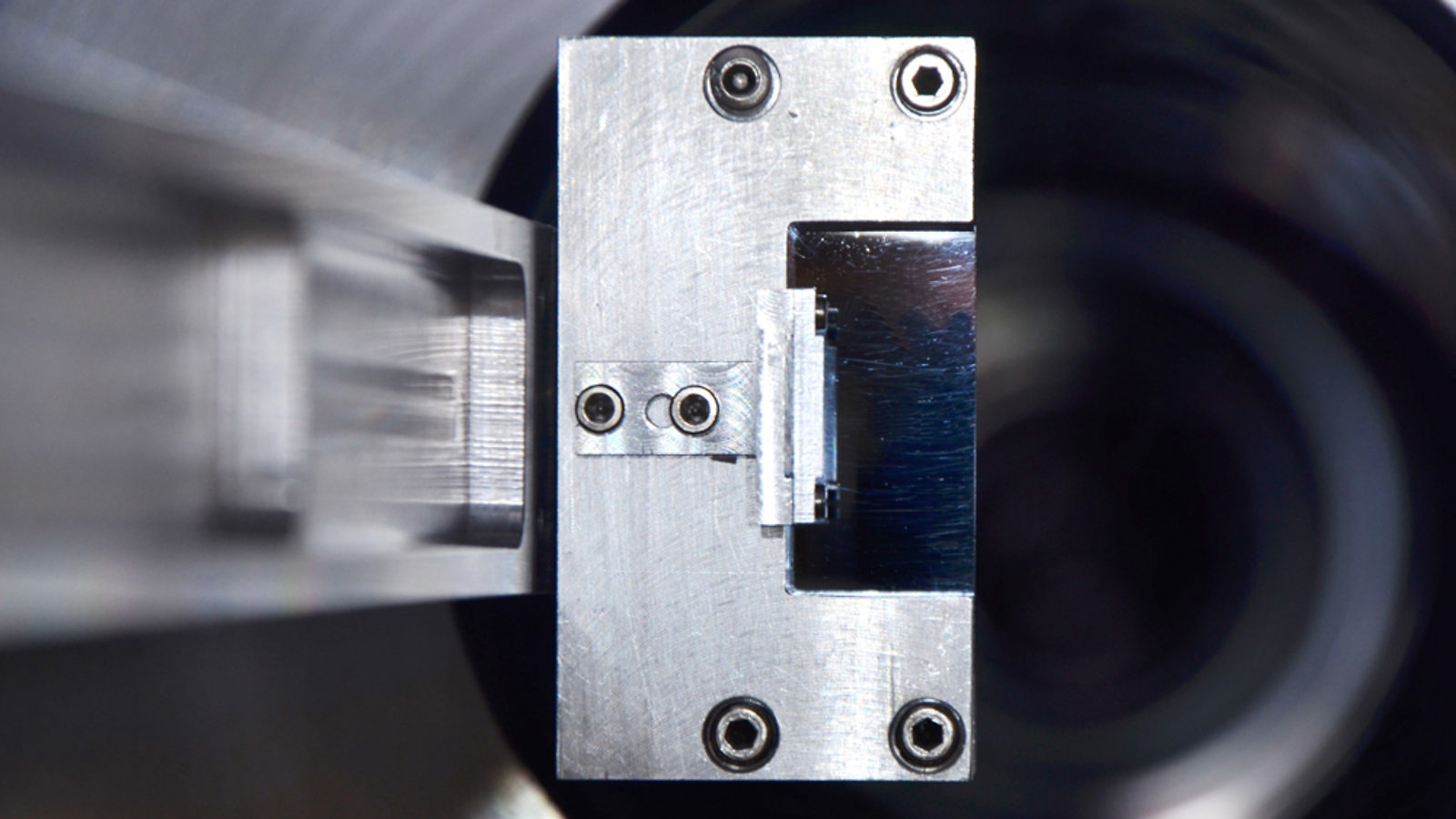A new system that would use bent crystals to remove errant particles in the Large Hadron Collider passed a major test last month by surviving a barrage of protons at high energy.
Beams of protons zip around the LHC 11,245 times a second. Magnets in the accelerator are designed to bend and narrow those beams as they travel, but the particles are not always obedient. Some meander away from their tightly packed bunches, forming a halo that can derail the beam, damage accelerator components and create background noise. Systems known as collimators shave off the halo and deflect the rebellious particles out of the beam pipe. The result is a cleaner, more reliable beam.
Scientists from the UA9 collaboration at CERN think they can trim particles more effectively by replacing the current primary collimators, which are made of carbon-carbon composite, with silicon crystals. The crystals, which are just 2 millimeters long, are 300 times smaller than the standard collimators. While carbon collimators immediately deflect particles in a general direction, crystals curve the path of the particles and reemit them with precision in a single direction. With both the carbon and crystal methods, errant particles are directed toward a second part of the collimation system, where they are absorbed by a massive target.
Some particles escape the collimation system and continue to circle around the accelerator hundreds of times before they are caught. With crystal collimators, it is estimated those particles will make it around only a few times.
To test how well the crystals would hold up against the power of the LHC, scientists directed around 50,000 billion protons with an energy of 450 billion electronvolts directly into the crystals. The test was meant to study how the crystals would react to a worst-case scenario involving a huge batch of high-energy particles hitting the crystals just after being injected into the LHC. Particles accelerated to high energies can severely damage equipment like magnets and detectors, so they need to be funneled out through exits, such as the collimators, without touching more sensitive components. But the particles traversing the crystals generate heat. There were concerns the high temperatures could damage or melt the crystals.
"This is a huge amount of power going into the crystal," UA9 spokesperson Walter Scandale says. "The question is: Can such a small object sustain the same power that is absorbed with no difficulty by the current system?"
The crystals survived the particle blast, which took place inside the CERN Super Proton Synchrotron accelerator.
In September and October, scientists also refined a system to orient the crystals. The crystal must be set at an extraordinarily precise angle that shifts depending on the energy of the beam. The system is now much more effective and ready to be tested in the LHC.
"We had two very strong technological challenges, and both have been solved this year," Scandale says. "With these two results in the pocket, we are fully confident the transition to the LHC should be with no major difficulty."
A prototype will be ready for testing when the LHC starts up again in 2014 at a collision energy of upwards of 13 trillion electronvolts.
"We are willing to test this kind of system in the LHC, where the situation is even more drastic and even more demanding than in the SPS accelerator," Scandale says.



